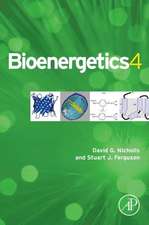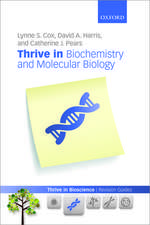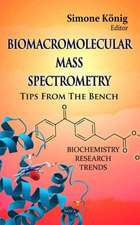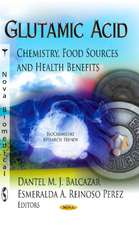Biological Roles of Sialic Acid
Editat de Abraham Rosenbergen Limba Engleză Paperback – 2 apr 2012
Preț: 392.75 lei
Nou
Puncte Express: 589
Preț estimativ în valută:
75.16€ • 78.18$ • 62.05£
75.16€ • 78.18$ • 62.05£
Carte tipărită la comandă
Livrare economică 14-28 aprilie
Preluare comenzi: 021 569.72.76
Specificații
ISBN-13: 9781468422283
ISBN-10: 1468422286
Pagini: 396
Ilustrații: XVIII, 376 p. 6 illus.
Dimensiuni: 152 x 229 x 21 mm
Greutate: 0.53 kg
Ediția:Softcover reprint of the original 1st ed. 1976
Editura: Springer Us
Colecția Springer
Locul publicării:New York, NY, United States
ISBN-10: 1468422286
Pagini: 396
Ilustrații: XVIII, 376 p. 6 illus.
Dimensiuni: 152 x 229 x 21 mm
Greutate: 0.53 kg
Ediția:Softcover reprint of the original 1st ed. 1976
Editura: Springer Us
Colecția Springer
Locul publicării:New York, NY, United States
Public țintă
ResearchCuprins
1 Chemistry and Analysis of Sialic Acid.- I. Historical Background.- II. Natural Occurrence of Sialic Acids.- III. Isolation and Purification.- IV. Chemistry of Sialic Acids.- V. Synthesis.- VI. Quantification of Sialic Acids.- VII. References.- 2 The Natural Occurrence of Sialic Acids.- I. Introduction.- II. The Natural Occurrence of Sialic Acids.- III. Evolution of Sialic Acids.- IV. References.- 3 The Distribution of Sialic Acids Within the Eukaryotic Cell.- I. Introduction.- II. Extracellular Sialic Acids.- III. Distribution within the Cell.- IV. Conclusions.- V. References.- 4 Anabolic Reactions Involving Sialic Acids.- I. Introduction: Perspective and Directions.- II. Biosynthesis of the Sialic Acids.- III. Biosynthesis of Polymers, Glycoproteins, Mucins, and Glycolipids Containing Sialic Acid.- IV. Thoughts on Physiological Function of Sialic Acids.- V. References.- 5 Catabolism of Sialyl Compounds in Nature.- I. Introduction.- II. Pathways of Degradation.- III. Cellular Mechanism of Degradation.- IV. Functional Implications.- V. Concluding Remarks.- VI. References.- 6 Disorders of Ganglioside Catabolism.- I. Introduction—The Catabolism of Gangliosides.- II. Tay-Sachs Disease (Type I GM2-Gangliosidosis).- III. Type II GM2-Gangliosidosis.- IV. Other Variant Forms.- V. Generalized Gangliosidosis (GM1-Gangliosidosis).- VI. Potentially Related Disorders.- VII. References.- 7 The Biological Role of Sialic Acid at the Surface of the Cell.- I. Introduction.- II. Occurrence, Forms, and Amounts of Sialic Acid Residues at the Surface of the Cell.- III. The Masking of Cell-Surface Antigens by Sialic Acid.- IV. Sialic Acid as a Receptor at Cell Surfaces.- V. Sialic Acid in Normal and Malignant or Transformed Cells.- VI. Role of Sialic Acid in Cell-to-Cell Interaction.-VII. Physiological Role of Sialic Acid Residues.- VIII. Conclusion.- IX. References.- 8 The Altered Metabolism of Sialic-Acid-Containing Compounds in Tumorigenic-Virus-Transformed Cells.- I. Introduction.- II. Experimental Procedures.- III. Ganglioside Metabolism in Cultured Mouse Cell Lines.- VI. Sialic Acid and Glycoproteins in Transformed Cells.- V. Relationship between Viral Transformation and Altered Ganglioside Metabolism.- VI. Discussion.- VII. Concluding Remarks.- VIII. References.- 9 Circulating Sialyl Compounds.- I. Introduction.- II. Normal Plasma Constituents.- III. Circulating Sialoglycoproteins in Abnormal Physiological States.- IV. Role of Sialic Acid in Circulating Sialoglycocompounds.- V. References.- 10 Sialidases.- I. Background and Nomenclature.- II. Bacterial Sialidases.- III. Viral Sialidases.- IV. Experimental Use of Microbial Sialidases.- V. Mammalian Sialidases.- VI. References.








